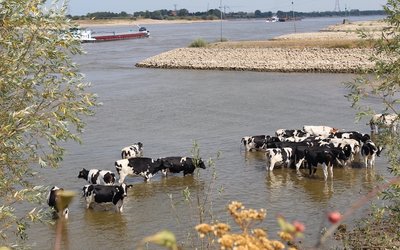Risks and opportunities for managed grasslands in France
December 8, 2013

Grasslands are one of the most widespread vegetation types worldwide. In France, they cover 45% of the agricultural land area, with 80% of these grasslands being permanent. During this century, in terms of mean impacts, drainage and forage quality are projected to decline, whereas annual forage provisioning is positively affected, with opportunities of high spring and late fall forage production.
Spring growth can benefit from warming and increased atmospheric CO2 concentration, provided that water resources are available to support vegetation. The greatest opportunity concerns winter production that may benefit from mild climate conditions, thus allowing for extension of the grazing season and reduction of forage requirements. Such a perspective could contribute to improve the farm’s degree of forage autonomy and security of livestock systems when facing more hazardous climate conditions. Less favourable conditions will likely be met in summer as drier conditions in the far future were estimated, in most cases, to counteract the benefit received from warming and, in a few cases, to lead to significant forage losses.
The instability in summer yield, combined to increased herbage productivity in spring and winter, can create important changes in livestock farming systems. Forage resource usually stored for animal at barn during the cold season could be partly redistributed in summer to deal with increased risk of forage deficits.
Source: Graux et al., 2013. Agricultural and Forest Meteorology 170: 114–131.
Photo: Gilles San Martin (www.flickr.com)








